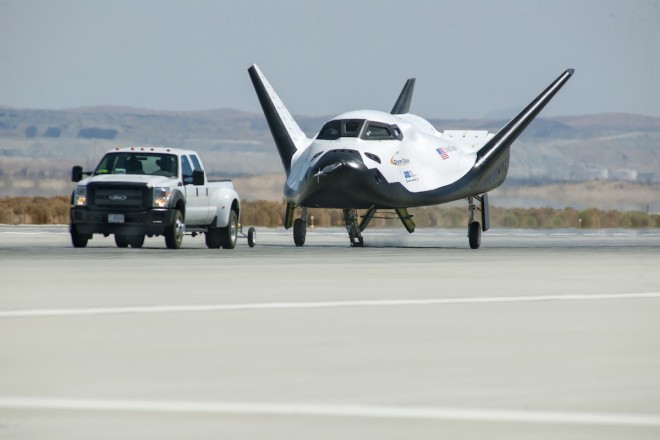The Grasshopper rocket successfully took off at 250 m with an offset of 100 m
Elon Musk and his SpaceX company continue successful experiments with the Grasshopper rocket. A rocket with the height of a 10-story building had previously made six successful flights, and during the seventh experiment, on August 13, 2013, it first maneuvered with a shift to the side by 100 m at an altitude of 250 m, after which it sank back to the center of the runway.
Grasshopper is an experimental project for testing SpaceX rocket engines, which in the future are supposed to be used in various vertical take-off and landing vehicles, including reusable Falcon 9 and Falcon Heavy rockets. The project began to be developed in 2011, and the first flight tests were carried out in 2012. Since then, altitude and flight speed have been gradually increasing. By the end of 2013, SpaceX expects to conduct tests at supersonic speeds.
After three years of testing, Elon Musk plans to launch commercial flights. The US Federal Aviation Administration has already granted SpaceX permission for 70 suborbital flights per year. In the future, Musk hopes to win a NASA contract for the delivery of goods and astronauts to the International Space Station.
In addition to SpaceX, other private companies are also developing spacecraft. For example, Jeff Bezos's Blue Origin (Amazon founder) is developing the reusable Dream Chaser spacecraft. His model has already been purged in a wind tunnel, and the prototype passed tests for acceleration and braking at speeds up to 100 km / h .


Dream Chaser
Eventually, SpaceShipTwo continues to be tested . Virgin Galactic has already begun accepting pre-orders for suborbital flights from future tourists. To date, 625 people have expressed a desire to pay $ 250 thousand for the opportunity to look at the black sky and experience zero gravity for several minutes. SpaceShipTwo commercial flights are scheduled for 2014.

SpaceShipTwo
Grasshopper is an experimental project for testing SpaceX rocket engines, which in the future are supposed to be used in various vertical take-off and landing vehicles, including reusable Falcon 9 and Falcon Heavy rockets. The project began to be developed in 2011, and the first flight tests were carried out in 2012. Since then, altitude and flight speed have been gradually increasing. By the end of 2013, SpaceX expects to conduct tests at supersonic speeds.
After three years of testing, Elon Musk plans to launch commercial flights. The US Federal Aviation Administration has already granted SpaceX permission for 70 suborbital flights per year. In the future, Musk hopes to win a NASA contract for the delivery of goods and astronauts to the International Space Station.
In addition to SpaceX, other private companies are also developing spacecraft. For example, Jeff Bezos's Blue Origin (Amazon founder) is developing the reusable Dream Chaser spacecraft. His model has already been purged in a wind tunnel, and the prototype passed tests for acceleration and braking at speeds up to 100 km / h .


Dream Chaser
Eventually, SpaceShipTwo continues to be tested . Virgin Galactic has already begun accepting pre-orders for suborbital flights from future tourists. To date, 625 people have expressed a desire to pay $ 250 thousand for the opportunity to look at the black sky and experience zero gravity for several minutes. SpaceShipTwo commercial flights are scheduled for 2014.

SpaceShipTwo
